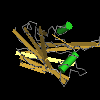?cl19105: Sina Superfamily (this model, PSSM-Id:388509 is obsolete)
 
|
